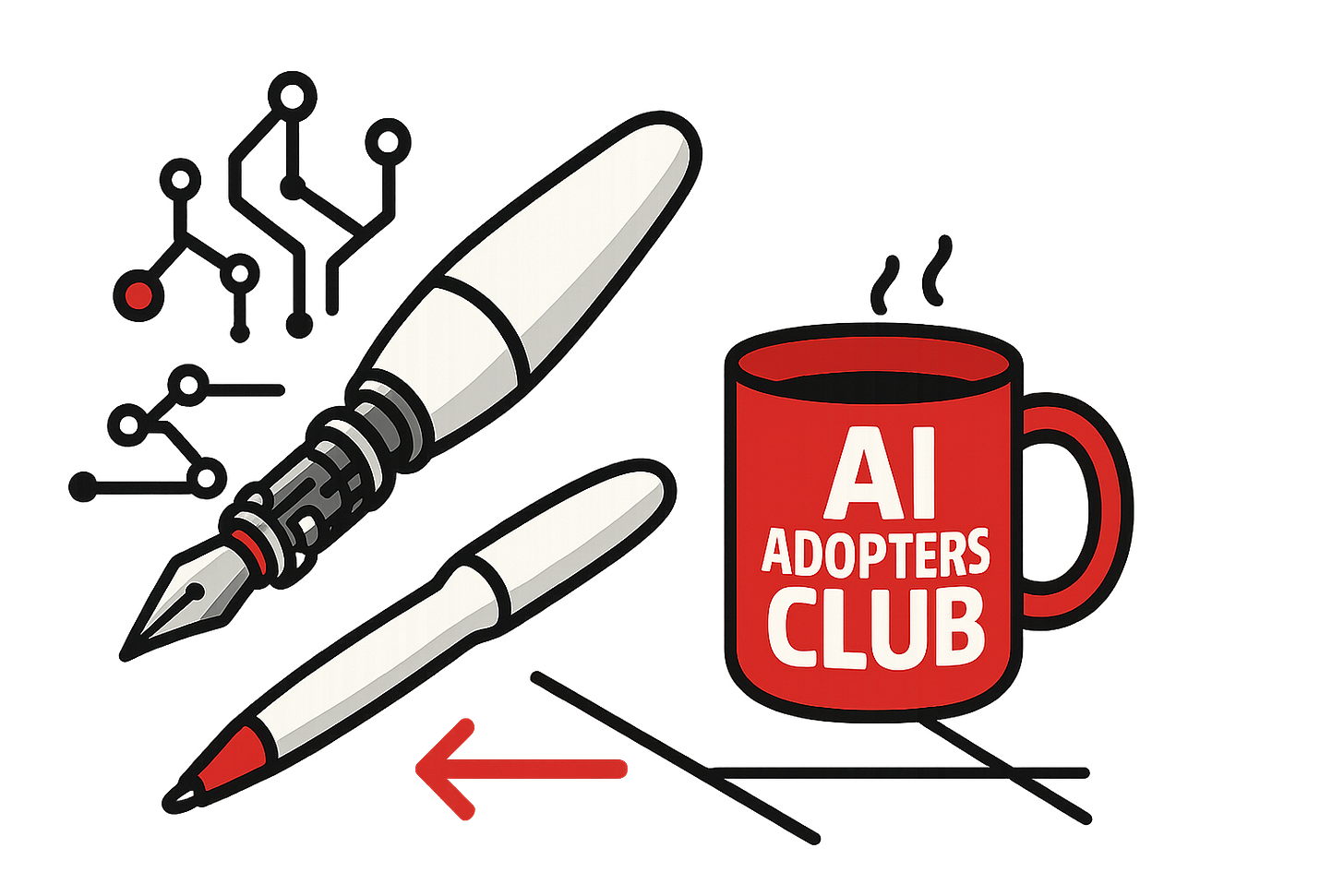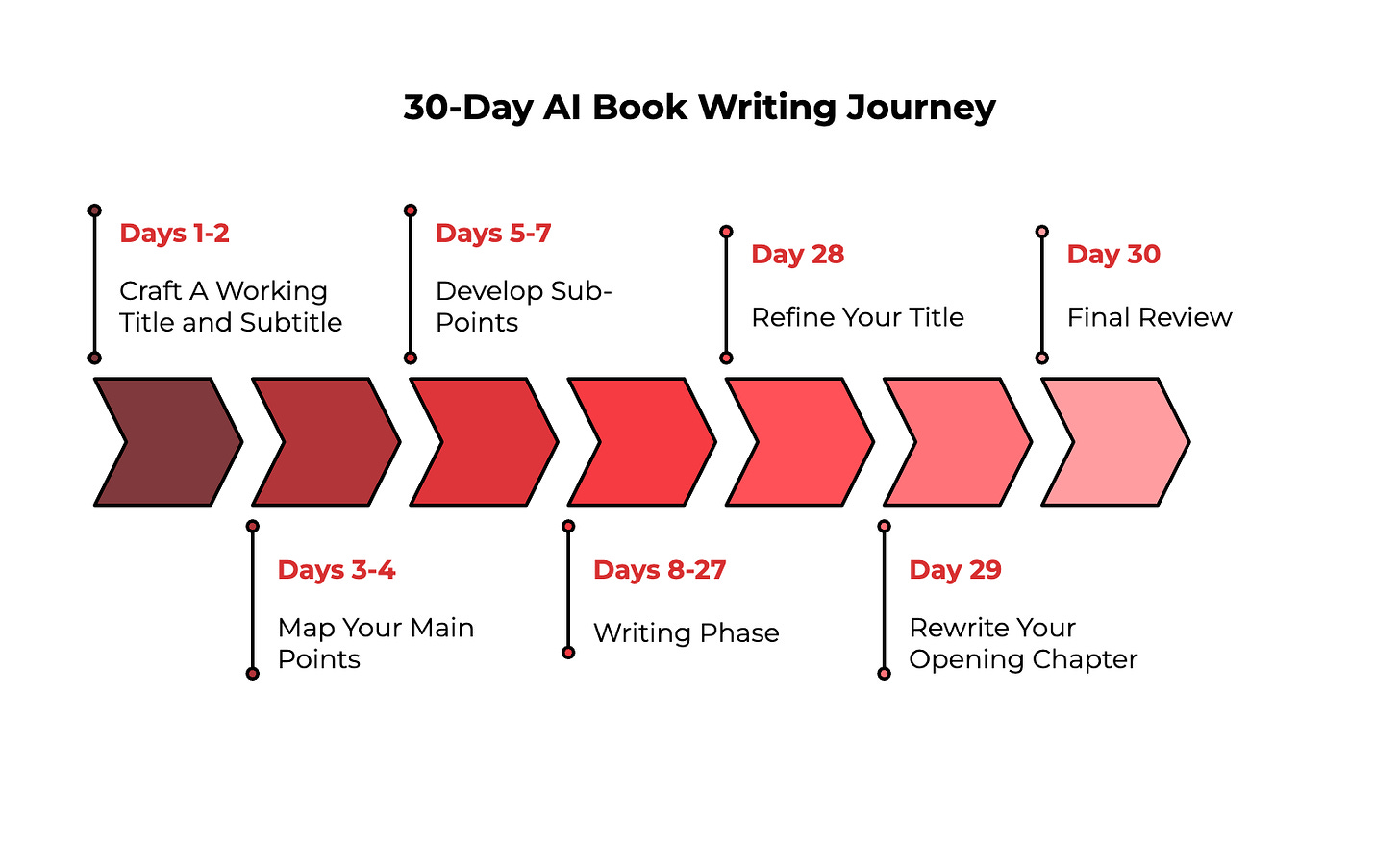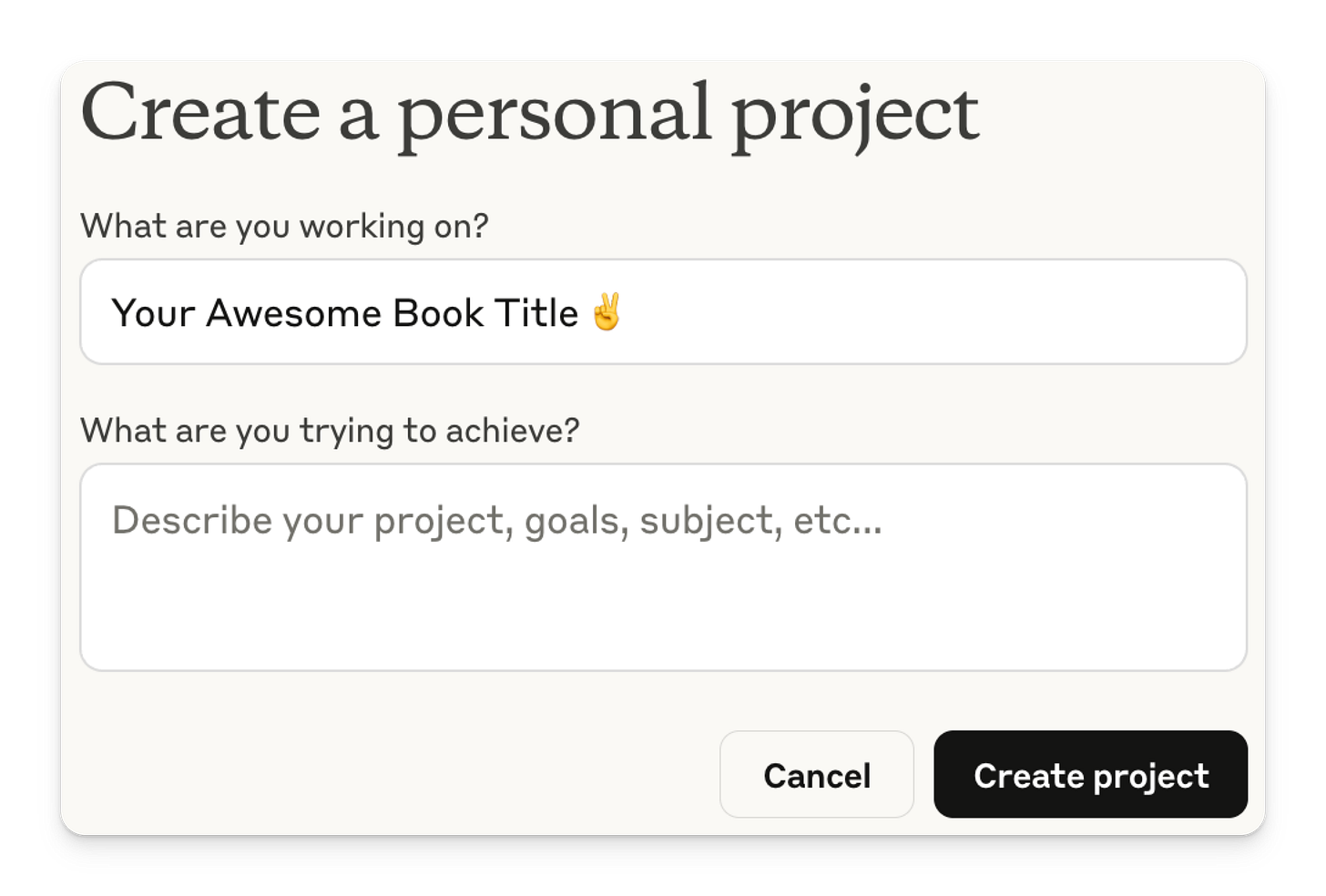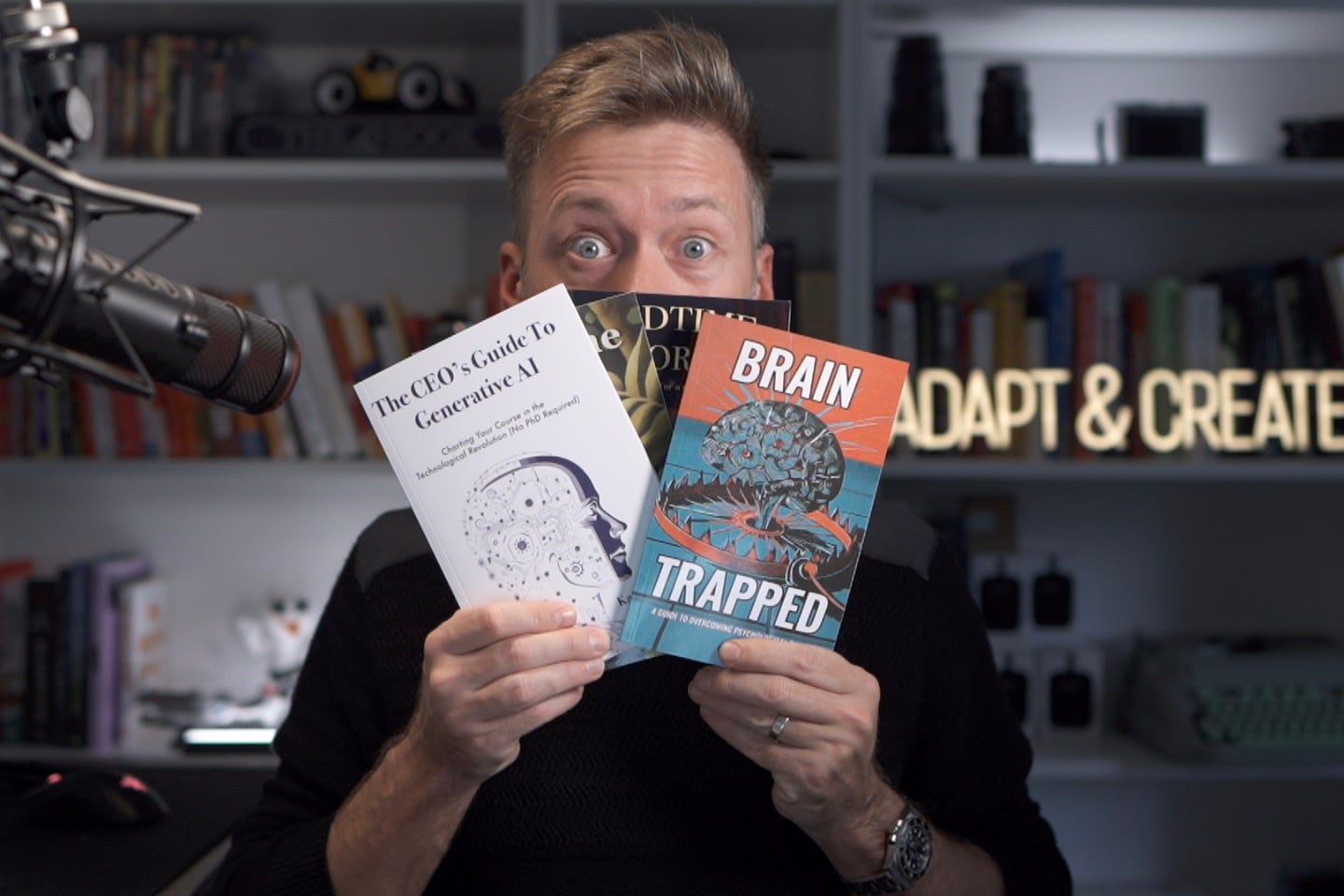5 Steps to Write Your Book Using AI (30 Day Framework)
How to Turn Your "Someday" Manuscript into a "Shipped" Project Using AI-Powered Prompts
Hey Adopter,
That book idea you mentioned at the last strategy meeting? The one collecting dust while your calendar fills with "urgent" tasks? You already have the expertise. You already know what professionals in your field struggle with. What you need is a production system that turns scattered knowledge into a finished book without taking over your life.
The problem isn't your writing ability or lack of ideas. It's trying to write a book the same way everyone else does: alone, unstructured, and without a system. But what if you could build your book like you'd execute a high-stakes project, with AI handling the heavy lifting?
The Reality Check
Your unfinished book isn't just costing you time - it's costing you opportunities. While you're stuck in the endless cycle of "I'll start next week," others are publishing, building authority, and opening new career doors. The traditional advice of "write every day" is about as helpful as "check your email less" - it sounds good but falls apart in practice.
Writing a book (especially these days) doesn't require more discipline or more hours in your day. It requires a system that turns Claude into your personal writing department, producing consistently high-quality content that actually sounds like you.
Here's the 5-step framework I used to write a 50,000-word book in 30 days (less time than most people spend preparing for annual reviews):
Choose the Main Title & Subtitle
Make a list of all the Main Points
List out all the little Sub-Points
Fill in your Sub-Points
Do a final spelling/grammar check
Let me show you exactly how to turn this framework into a practical system. It starts with the first critical prompt template for crafting your title.
PRO TIP: AI Integration Remember: AI is your assistant, not your author. Use it to enhance your process, but keep your unique voice and expertise at the forefront. Like any good assistant, it's there to make you more efficient, not to take over the show.
With that out of the way, I prefer Claude.ai for writing. For larger projects like a book, create a Claude Project to keep all context in one place.
Setup Guidelines:
Copy these prompts into a document
Use them in sequence as you write
Adjust the word counts and specifics as needed
Keep your responses for reference
Use the same prompt template for similar sections to maintain consistency
Each prompt builds on the previous one, creating a systematic approach to helping you write your book.
Step-by-Step Implementation Guide
1. Craft Your Working Title and Subtitle (Days 1-2)
Most business books fail before they're written because the title doesn't clearly communicate value. But here's what most people get wrong: they spend weeks perfecting a title before writing a single chapter. Your initial title is a working title - good enough to guide your writing but flexible enough to evolve.
Think of this as your project brief. It gives you direction and keeps your content focused, but your best title will emerge after you've written the book and understand exactly what you've created.
Answer these four critical questions:
What reader question are you answering?
What problem are you solving?
What solution are you providing?
How will you get readers there?
Don't move forward until you have crystal-clear answers.
Use Claude with this prompt. Replace everything in [brackets] with your specific details:
I'm writing a book about [your topic] for [your target readers]. The book will help them [main transformation or solution you're offering]. Please generate 5 potential working title and subtitle combinations that would grab their attention and clearly communicate the value they'll get.
2. Map Your Main Points (Days 3-4)
Think of this like outlining quarterly objectives. Each main point should build logically toward your reader's desired outcome. Most books lose readers because chapters feel random instead of progressive.
List every major idea you want to cover
Arrange them in a logical order
Aim for 5-7 main points per book
Test each point by asking: "Does this serve my title's promise?"
I'm writing '[your chosen title]'. My readers should be able to [main goal] after reading this book. The key areas I want to cover are:
[Topic 1]
[Topic 2]
[Topic 3]
Please create a logical chapter outline with 5-7 main points that will guide readers to achieve this goal. For each chapter, include a brief description of what it will cover.
3. Develop Sub-Points (Days 5-7)
This is where most people get stuck - they have big ideas but no roadmap for explaining them. Break each main point down like you're delegating to a team member. Be specific enough that Claude can run with it.
Under each main point, list:
Supporting ideas
Real-world examples
Key insights
Relevant stories
Add at least 3-5 sub-points per main point.
I'm working on a chapter titled '[chapter title]' about [main concept]. By the end of this chapter, readers should understand/be able to [specific outcome]. Please help me develop:
5 key teaching points
2-3 real-world examples
Potential exercises or worksheets
Common mistakes to address
Action steps for readers
4. Writing Phase (Days 8-27)
Here's where the magic happens. Instead of staring at blank pages, you're expanding detailed outlines. Each sub-point becomes a ready-made prompt for Claude to develop.
Set a daily word count goal (1,500-2,000 words)
Write through your outlined points in order
Use your sub-points as ready-made prompts
Don't edit while writing - keep moving forward
Help me expand this point: [paste your bullet point or brief idea]
My readers are [target audience]. Keep the tone conversational but professional. Include one concrete example and one actionable takeaway. Aim for about [insert number] words.
5. Final Polish and Title Refinement (Days 28-30)
Most people skip this step and wonder why their book feels disjointed. This isn't about perfection - it's about consistency and clarity. Think of it as your final project review before presenting to stakeholders.
But here's the key insight: now that you've written your entire book, you understand exactly what you've created. Your working title got you started, but your final title should reflect what you actually delivered.
Day 28: Refine Your Title: Read through your completed manuscript and ask: Does my working title still capture the book's core value? Often, your best title emerges from the content itself.
I've completed my book manuscript about [topic]. The main transformation readers experience is [actual outcome after writing]. The core insights I deliver are [key takeaways from your completed book].
Based on the actual content I've written, generate 5 refined title and subtitle combinations that better capture what the book actually delivers.
Day 29: Rewrite Your Opening Chapter Your first chapter sets expectations. Now that you know exactly where your book goes, rewrite the opening to create better flow and stronger reader engagement.
Day 30: Final Review
Complete a thorough spelling/grammar check
Review for consistency in tone and style
Verify all examples and references
Format for readability
Please review this chapter draft: [paste chapter]
Focus on:
Is the flow logical and easy to follow?
Are the ideas clearly explained?
Are examples practical and relevant?
Does it maintain a consistent, approachable tone?
What specific improvements would make it stronger?
Making It Work in the Real World
Start by treating your working title and subtitle as your project brief - they should provide direction and focus, but don't expect perfection. The best titles emerge after you understand what you've actually written. Map out your main points like you'd outline quarterly objectives, ensuring each one flows logically into the next. Break down these main points into sub-points, treating them like your daily task list - specific, actionable, and impossible to misinterpret.
Remember: your working title gets you started, but your final title should reflect what you delivered. Most authors overthink the title before writing and underthink it after writing. This approach flips that script.
The difference between books that get finished and books that don't isn't talent or inspiration. It's having a system that works even when motivation doesn't.
Bottom Line
With this framework, writing a book becomes less like that endless email thread and more like a well-executed project plan - structured, efficient, and actually complete in 30 days.
The professionals who finish books aren't more disciplined or creative. They just treat it like any other deliverable with clear milestones and AI handling the production work.
Your expertise is already there. The frameworks are already proven. You just need a production system that actually works.
Did you start with your first book yet? Feel free to ask me any questions about this topic here on Substack.
Adapt & Create,
Kamil









Thank you so much
This was very helpful and inspiring! Thank you!